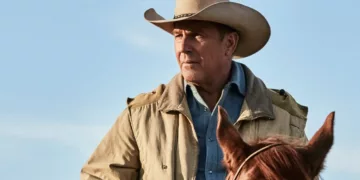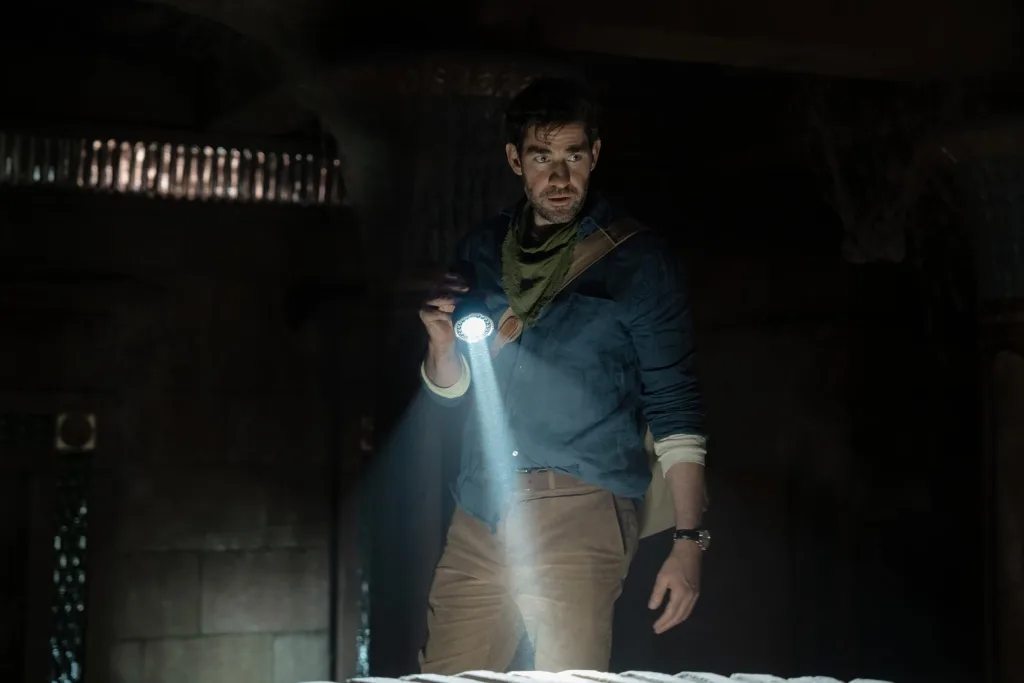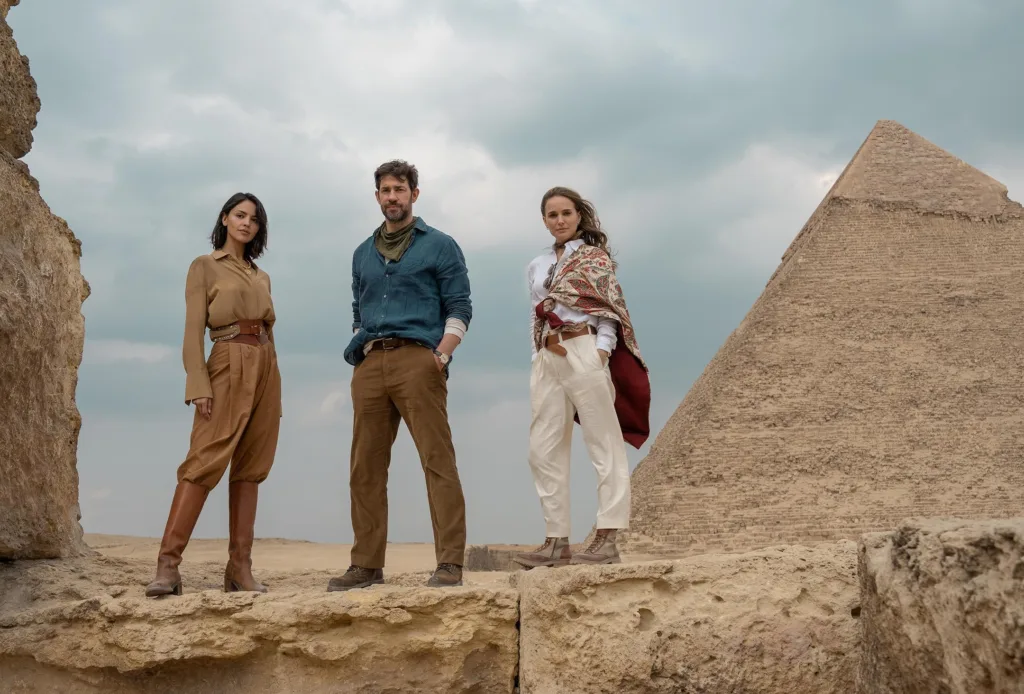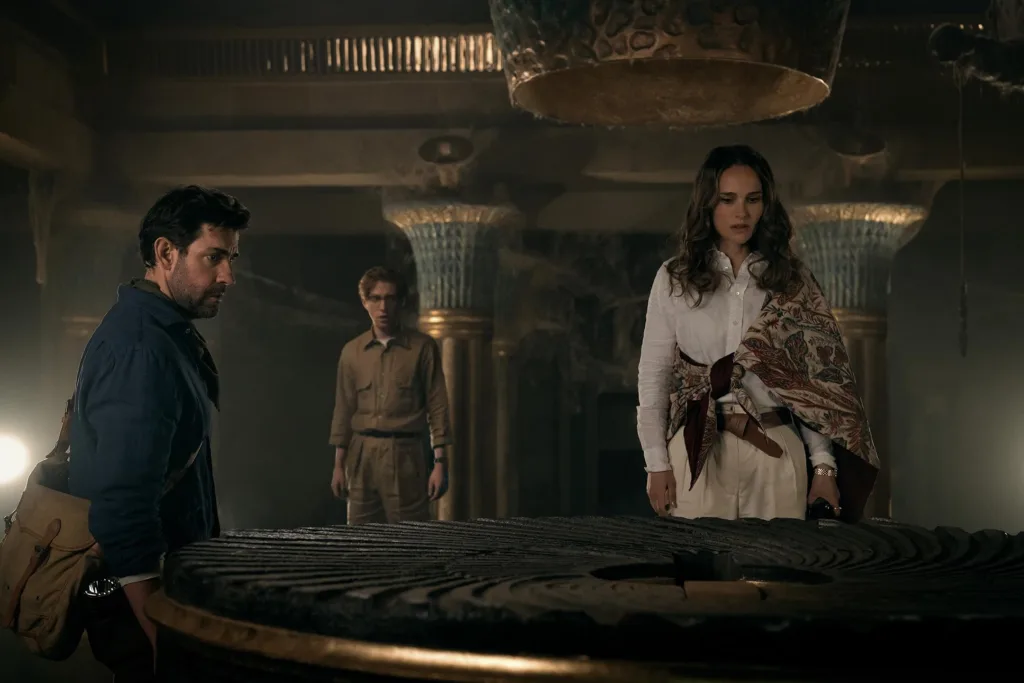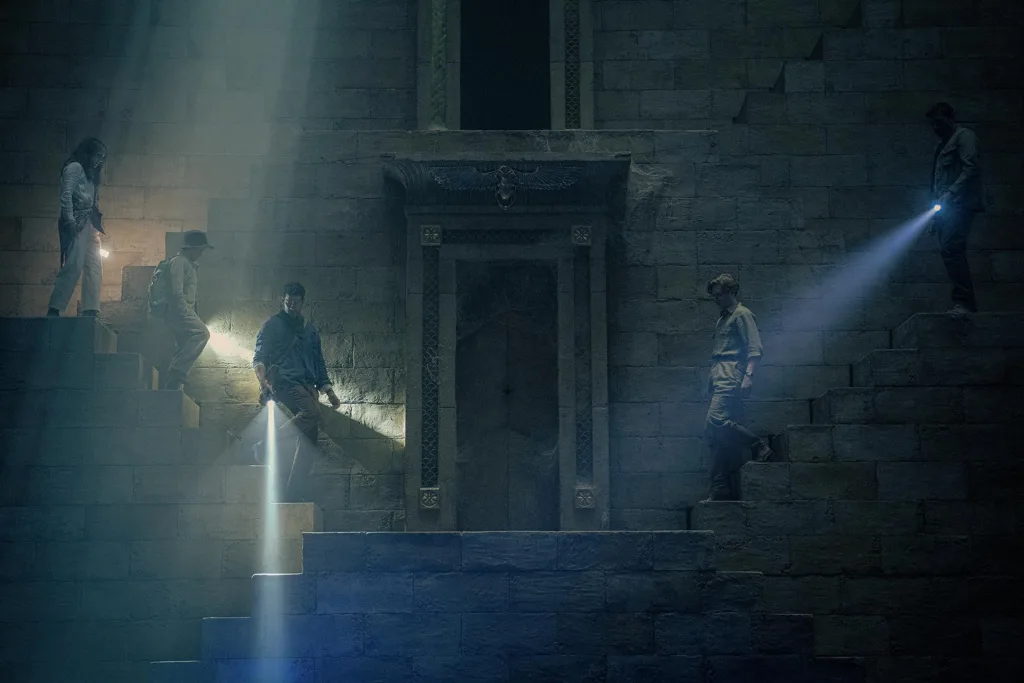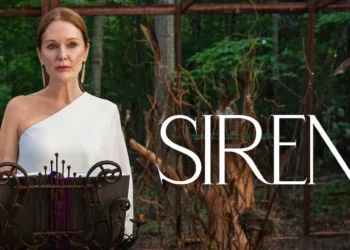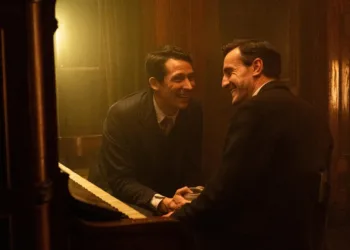The pursuit of mythic grails, those elusive symbols of ultimate desire, resonates across countless storytelling traditions, a testament to a shared human yearning for transcendence. “Fountain of Youth” positions itself within this grand lineage, offering a contemporary iteration of the treasure-hunting action-adventure. Its narrative architecture, while rooted in Western adventure tropes, aims for a global palate.
The film sets its sights on the eponymous legend: the perilous, globe-spanning search for the actual Fountain of Youth, that fabled wellspring promising eternal life to those who can unveil its secrets. At the genesis of this sprawling escapade are the estranged Purdue siblings, Luke and Charlotte, each wrestling with personal and professional crossroads.
Their paths converge through the machinations of Owen Carver, a terminally ill billionaire whose immense wealth and dwindling time ignite the expedition. These familiar archetypes – the fractured family, the desperate magnate – serve as recognizable anchors, propelling the characters into a quest where immediate crises and deeply buried personal histories become intertwined with the fate of an ancient marvel.
The film thus establishes a framework where universal human motivations—regret, ambition, the fear of mortality—are refracted through the lens of a distinctly Anglo-American adventure narrative, packaged for widespread consumption.
Relics, Realms, and Reverberations: The Cartography of a Modern Myth
The engine of this quest, the very grammar of its adventure, relies on a specific intellectual heritage—the protagonists must unearth and decipher a trail of intricate clues. These are not mere breadcrumbs, but cryptic messages ingeniously concealed within the fabric of Western high culture: on the reverse of priceless historical paintings by European masters like Caravaggio, El Greco, and Rembrandt, and secreted within artifacts such as the infamous “Wicked Bible.” This construction frames the intellectual puzzle-solving as an engagement with a curated selection of historical signifiers, a mechanism familiar to global audiences through decades of genre conditioning, yet one that subtly reinforces a particular cultural lineage as the keeper of “universal” secrets.
This deciphering propels the characters across an expansive world canvas, transforming iconic locations—Bangkok’s bustling streets, London’s familiar landmarks, Vienna’s imperial grandeur, the solemn depths of the Irish Sea yielding the Lusitania, and finally, Cairo’s ancient aura culminating in the Giza pyramids—into crucial nodes in the narrative network.
These settings are designed to be more than picturesque backdrops; they are active participants, their historical and cultural resonances purportedly integral to the unfolding mystery. Yet, this rapid transit through diverse geographies also risks presenting them as consumable set pieces, reflecting a common dynamic in globalized entertainment where local specificity can be subsumed by the demands of a universally accessible, fast-paced adventure.
The ultimate prize, the Fountain of Youth itself, while a potent symbol of desire, is guarded by a clandestine organization, a timeless trope introducing conflict and an opposing worldview, complicating the seekers’ relentless drive with an assertion of protected, perhaps forbidden, knowledge.
Avatars of Ambition, Guardians of Tradition: The Human Element in a Global Game
The expedition is steered by a constellation of characters whose archetypal functions resonate within established global cinematic language, even as their specifics reflect particular cultural frameworks. Luke Purdue, son of a fabled (and winkingly named “Harrison”) adventurer-archaeologist, embodies the Western trope of the cavalier rogue, obtaining rare antiquities through methods that blur the line between exploration and theft.
His motivations appear a blend of chasing an inherited legacy and a yearning for adventure expressed through simplistic, almost self-help, slogans. This portrayal of (John Krasinski’s) Luke, with his cocky self-assurance occasionally tipping into dismissiveness towards his sister, offers a familiar model of heroism, one whose individualistic drive is both its engine and potential flaw, a character beat often amplified in Hollywood’s global exports.
Counterbalancing him is Charlotte (Natalie Portman), the accomplished art curator thrust from a life of professional order and maternal responsibility—navigating a contentious divorce—into her brother’s chaotic orbit. Her initial reluctance and subsequent, often irritated, participation provide a grounding, skeptical perspective, reflecting a common narrative tension between freewheeling adventure and societal duty. Their bickering, the film’s primary source of interpersonal friction, speaks to universal sibling dynamics while simultaneously playing out within the specific constraints of their shared, culturally-loaded family history.
Fueling their perilous journey is Owen Carver (Domhnall Gleeson), the dying billionaire. He is a potent symbol of modern anxieties regarding mortality and the perceived omnipotence of wealth, a figure whose desperation for a cure could easily curdle into something more sinister, a narrative ambiguity designed to maintain intrigue across diverse audiences. Opposing their quest are figures like Esme (Eiza González), a formidable member of a secret sect.
She represents the guardian archetype, a protector of ancient wisdom against external forces, a role that can be both empowering and, depending on execution, a romanticized “other.” Her charged interactions with Luke tread a fine line common in such global adventure narratives. Inspector Jamal Abbass (Arian Moayed), the stylish Interpol agent, adds another layer of pursuit, his distinctive presence signifying a more formalized, institutional opposition, itself a product of an interconnected world’s legal frameworks.
The Ritchie Rhapsody: Orchestrating Spectacle in a Globalized Genre
Guy Ritchie’s directorial signature, a distinct blend of British cinematic sensibilities, is conspicuously applied to this large-scale action-adventure, a genre more commonly associated with Hollywood’s grand gestures. His characteristic swift pacing propels the narrative through its numerous global locales and perilous situations at a near-relentless speed.
Visually, the film exhibits energetic camera movements – the oft-noted pinwheeling motion, for instance, particularly around characters in dynamic action – and stylistic flourishes such as selective use of slow-motion. The effectiveness of these choices varies; at times they inject a kinetic charge, while at others they risk feeling like aesthetic tics rather than organically enhancing the narrative or character insight, a potential dissonance when viewed by global audiences accustomed to different genre rhythms.
The film’s commitment to exhilarating set-pieces is undeniable. From the opening international chase spanning Bangkok’s streets by bike and car, flowing into a train brawl, to daring art heists, the ambitious raising of the Lusitania shipwreck, a visually engaging fight within the Austrian National Library, and a climactic delve into the Pyramids of Giza, the spectacle is considerable. There’s an evident appreciation for practical stunts, lending a tangible weight to the action. Generally, these sequences are choreographed with clarity, ensuring the complex interplay of movement and threat remains largely coherent for a diverse viewership.
Aesthetically, Ed Wild’s cinematography contributes a notable visual texture, favoring less processed, more substantial imagery with deep blacks and occasionally greenish interiors, evoking an earlier era of blockbuster filmmaking that might resonate with those seeking an alternative to overly slick digital presentations. The production design navigates a line between depicting recognizable international locations and crafting intricate, sometimes fantastical, interior sets.
Loulou Bontemps’ costume design further aids characterization and visual appeal, from Inspector Abbass’s memorable houndstooth coat to the luxurious fabrics adorning the globetrotting ensemble. However, this visual and kinetic energy sometimes contends with James Vanderbilt’s screenplay, where dialogue often features a thesaurus-heavy vocabulary and intellectual posturing. This can lead to moments of unnatural-sounding banter, which, depending on Ritchie’s direction and the actors’ delivery, may either land as witty repartee or as a slight impediment to the otherwise accessible flow of adventure.
Mythic Hungers: Legacy, Kinship, and the Price of Eternity
Beneath the sheen of its action-oriented framework, “Fountain of Youth” gestures towards several resonant human concerns, often rooted in culturally specific archetypes yet possessing a capacity for broader appeal. The unseen but ever-present figure of the Purdue siblings’ father, Harrison, the quintessential adventurer-scholar, casts a long shadow.
This legacy fuels Luke’s choices, his internal conflicts visually hinted through dream sequences that reflect a struggle with his inherited path and the ethically dubious nature of his artifact acquisitions—a tension echoing post-colonial critiques of treasure hunting. Simultaneously, the perilous quest serves as a crucible for Luke and Charlotte, forcing their fractured relationship towards a semblance of understanding and renewed connection, a narrative arc common to family sagas across many cultures.
The pursuit of the Fountain itself unpacks the timeless human desire for immortality, globally mirrored in myths from Gilgamesh onwards. Owen Carver’s desperate quest becomes a modern lens on this yearning, intensified by the stark reality of his encroaching death, raising questions about the lengths to which humanity might go to defy nature. This introduces an ethical dimension: should such a potent, mythical resource be controlled, and by whom? The film circles this, leaving the implications largely for the audience to ponder.
Charlotte’s internal tug-of-war between the intoxicating call of adventure and the grounding realities of motherhood and professional life further highlights a contemporary, widely understood conflict. This contrasts sharply with Luke’s espoused philosophy that “life is about adventure,” an individualistic credo whose ripple effects on himself and those around him invite reflection on its ultimate sustainability and cost.
The Cartographer’s Last Mark: Navigating Spectacle and Substance
Ultimately, “Fountain of Youth” charts a course through the familiar waters of the treasure-hunt genre, delivering a significant measure of high-octane spectacle that will likely find purchase with a global audience primed for such escapades. Its success in balancing this visual largesse with consistent character engagement and unwavering narrative coherence is, however, more varied.
While the rapid succession of exotic locales and elaborate action sequences provides a surface-level thrill, the deeper currents of its thematic explorations—family, legacy, the ethics of pursuit—occasionally struggle for prominence amidst the kinetic energy. The film’s visual language, a confluence of Ritchie’s stylistic inclinations and genre convention, aims for a broadly appealing dynamism.
What lingers, then, is less a set of definitive answers to the profound questions it brushes against—the nature of immortality, the true value of lost knowledge—and more a series of impressions. The capacity to evoke genuine wonder or a deep sense of awe in its encounter with ancient mysteries feels intermittently achieved, sometimes overshadowed by the sheer mechanics of the adventure.
One is left to ponder whether the journey itself, with its fleeting glimpses of cultural touchstones and its relentless forward momentum, is intended as the principal offering, leaving the audience to map their own significance onto the well-trodden paths it retraces.
Fountain of Youth is set to premiere on Apple TV+ on May 23, 2025
Full Credits
Director: Guy Ritchie
Writer: James Vanderbilt
Producers: Guy Ritchie, James Vanderbilt, David Ellison, Dana Goldberg, Don Granger, Tripp Vinson, William Sherak, Ivan Atkinson, Jake Myers
Cast: John Krasinski, Natalie Portman, Eiza González, Domhnall Gleeson, Arian Moayed, Laz Alonso, Carmen Ejogo, Stanley Tucci, Daniel de Bourg, Steve Tran, Benjamin Chivers, Michael Epp
Director of Photography (Cinematographer): Ed Wild
Editor: James Herbert
Composer: Christopher Benstead
The Review
Fountain of Youth
"Fountain of Youth" offers a visually energetic globetrotting adventure packed with ambitious set-pieces and Guy Ritchie's signature kinetic style. While it gestures towards compelling themes of legacy, family, and the human desire for eternal life, the film often prioritizes spectacle over deeper narrative or character exploration. Its reliance on familiar genre conventions makes for an accessible, if somewhat derivative, expedition that entertains on a surface level but seldom imparts a lasting sense of wonder or profound insight into the myths it pursues.
PROS
- Impressive, large-scale action sequences and extensive global locations.
- Energetic directorial flair and generally swift pacing.
- High production values with notable cinematography and costume design.
- Touches upon intriguing thematic ideas concerning mortality and legacy.
- Some engaging supporting character portrayals.
CONS
- Story feels highly familiar, echoing numerous past adventure films.
- Dialogue often sounds unnatural and overly elaborate.
- Effectiveness of lead character chemistry and casting is debatable.
- Director's stylistic choices can occasionally seem gratuitous.
- Deeper themes are introduced but not substantially explored.
- The balance often tilts towards spectacle at the expense of narrative depth.

















